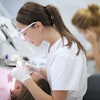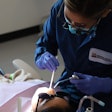
The results of the ADA study published in the January 2013 Journal of the American Dental Association do nothing to discredit the utilization of dental therapists in the workforce in their traditional role of providing care for children in school-based programs.
Nothing in the study refutes the conclusions reached last year in a comprehensive review of the global literature by 16 international colleagues and myself. Those conclusions were that dental therapists in public programs caring for children improve access to care; provide safe, quality care resulting in improved oral health outcomes; and do so economically. Surely members of the ADA House of Delegates will be disappointed with the results of this new study, which they authorized more than a year ago, at considerable expense to the membership.
Research methodologies must be such as to address the nature of the research question being posed. Unfortunately, the ADA study failed to do this, as acknowledged by the study's results. In designing the methodology, the authors of the study should have realized that while research to identify randomized, controlled studies is appropriate for investigating the relative effectiveness of such issues as clinical techniques, it is not an appropriate methodology to study broad workforce issues and delivery systems.
The ADA reported that "there were no randomized, controlled studies available." Of course there were not, so why the use of the term "systematic review"? Interestingly, the article does indicate that 18 studies met "inclusion criteria." All of these, except one, were stated to have a moderate to high risk of bias; therefore, "not meaningful."
As a "systematic review," the research resulted in nothing of substance. Since there were no randomized, controlled studies, the authors turned to standard epidemiological surveys to draw their major conclusions -- surveys that had already been identified, and with results reported previously. From these surveys they concluded:
"In select groups that received irreversible dental treatment by teams that included midlevel providers, caries increment and severity decreased across time. However, there was no difference in caries increment and severity compared with those in populations in which dentists provided all irreversible treatment." (Documentable evidence indicates that the second aspect of this conclusion is inaccurate.)
"Untreated caries decreased across time and untreated caries decreased compared with that in populations in which dentists provided all treatment."
Note that both of these statements -- the major conclusions of the study -- are supportive of dental therapists' practice.
It is critical to note that a significant number of relatively recent epidemiological studies by international ministries of health relative to the effectiveness of dental therapists' practice were, for unknown reasons, not included in the ADA report. However, they are readily available in the recent comprehensive review of the global literature mentioned previously. These studies continue to document the superiority of oral health outcomes for children in international public school-based programs staffed by dental therapists versus the outcomes of the dentist-focused, private practice model in the U.S.
Access to care critical
The clamor of the public (and the dental profession) in the U.S. is for "access to care." Yet ADA President Robert Faiella, DMD, seems to think access to care is not particularly relevant, as he comments: "To put it simply, the report shows that if more personnel are treating cavities, more cavities get treated."
What am I missing? Is it not important for children with carious lesions (dental disease) to be treated? What of the morbidity (even mortality) of untreated dental disease? The literature is definitive in documenting that the dental therapists in public school-based programs result in significantly, even dramatically, improved access to care for children when compared with the U.S. -- care that is both restorative and preventive.
Both Timothy Wright, DDS, MS, the lead author of the article, and Dr. Faiella, in their commentaries, resort to using that oft-repeated ADA mantra that therapists are providers who focus on "irreversible surgical procedures." They must know that dental therapists spend much of their time providing preventive services. If they are not aware of this, they have not studied the issue sufficiently or carefully. Do not dentists in the U.S. spend much (most) of their time providing "surgical procedures"?
The frequent use of the ADA's politically expedient, inflammatory expression of "irreversible surgical procedures" only serves to suggest a bias built into this research from its inception. The literature indicates that therapists spend considerable time providing preventive care. Results in reducing caries prevalence, as noted above, demonstrate the effectiveness of their preventive efforts. No ministry of health in the world would disagree with the statement in the ADA's article, "For any program to be effective in managing oral health outcomes, prevention must be a primary focus."
While reflecting a number of significant flaws, ironically the conclusions of the ADA's "systematic review" provide continuing support for the value of adding dental therapists to the oral health workforce in the U.S., though in its public pronouncements the ADA attempts to characterize it otherwise.
David A. Nash, DMD, EdD, is the William R. Willard Professor of Dental Education and a professor of pediatric dentistry at the University of Kentucky College of Dentistry.



















